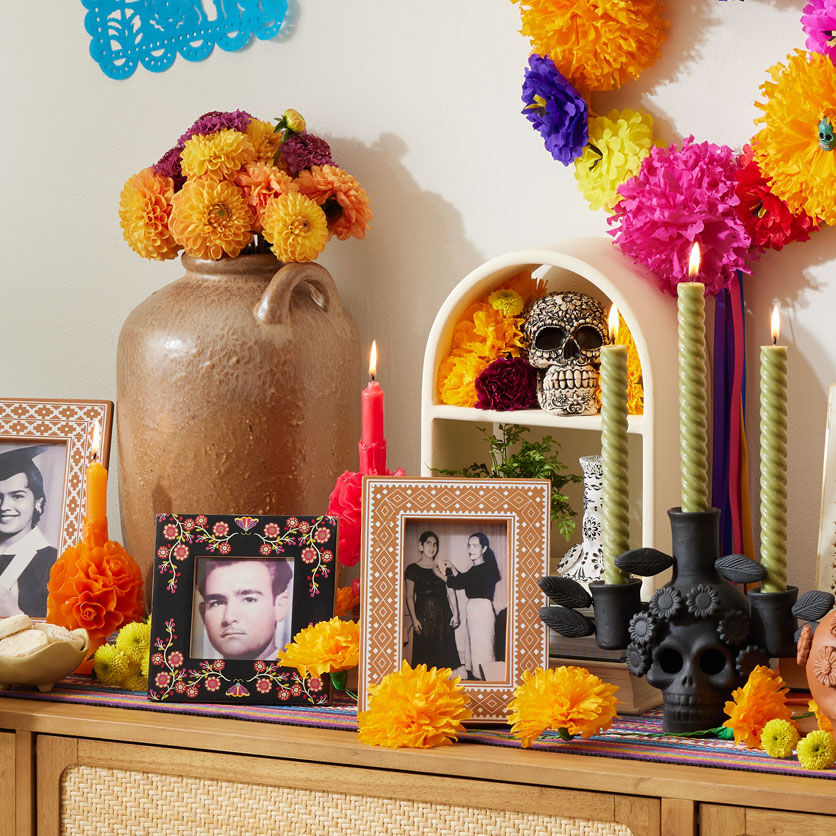Día de Muertos, or Day of the Dead, is a celebration that honors our loved ones who have passed away. It’s a vibrant and colorful time that allows families to remember their ancestors while celebrating life. As someone who has participated in this beautiful festival for years, I can tell you that the decor is perhaps one of the most significant aspects of the celebration. This article will explore various elements of Día de Muertos decor, offering tips, ideas, and personal insights to help you create a meaningful and colorful tribute.
Understanding Día de Muertos: A Brief Overview
Día de Muertos is a Mexican holiday that merges indigenous traditions with Spanish influences. It is celebrated on November 1st and 2nd, coinciding with the Catholic holidays of All Saints’ Day and All Souls’ Day. The colorful decorations symbolize death as a natural part of life, promoting remembrance over mourning.
Essential Elements of Día de Muertos Decor
When decorating for Día de Muertos, certain elements are indispensable. Here are the key components that you will often see:
1. Altars (Ofrendas)
The altar, or ofrenda, is the heart of Día de Muertos decor. It is a space where families can place photographs, favorite foods, and personal items of the deceased.
How to Create an Ofrenda
- Layering: Use different levels to create depth; the most important items should be higher up.
- Personal Touches: Include items that were meaningful to your loved one.
- Food Offerings: Traditional foods like pan de muerto (bread of the dead) are often included.
2. Calaveras (Skulls)
Skulls made of sugar or ceramic, known as calaveras, are iconic symbols of Día de Muertos. They can be decorated with bright colors and designs, often featuring the names of the deceased.
Personalizing Calaveras
Creating personalized calaveras can be a fun activity. Here’s how you can make them:
- Materials Needed: Sugar skull molds, icing, and decorations.
- Steps: Prepare the sugar mixture, mold it, allow it to dry, then decorate!
3. Marigolds (Cempasúchil)
The bright orange marigolds are believed to guide the spirits of the deceased back to their altars with their vibrant color and scent.
Using Marigolds in Decor
Incorporate marigolds into your decor in several ways:
- Garlands: Create garlands to hang around your altar.
- Petals: Scatter petals on the altar or around photographs.
Colors and Their Meanings in Día de Muertos Decor
The colors used in Día de Muertos decor are rich in symbolism. Here’s a brief overview:
| Color | Meaning |
|---|---|
| Yellow | Represents the sun and life. |
| Purple | Symbolizes grief and mourning. |
| Pink | A color of celebration, used for joyous occasions. |
| Black | A color of death, representing the cycle of life. |
DIY Día de Muertos Decor Ideas
Creating your own Día de Muertos decor can be a fun and rewarding activity. Here are some DIY ideas to get you started:
1. Paper Picado
Paper picado is a traditional Mexican decoration made from colorful tissue paper, often featuring intricate cut-out designs.
Making Your Own Paper Picado
Follow these steps to create your own:
- Materials Needed: Tissue paper, scissors, and string.
- Instructions: Fold the tissue paper and cut out designs before stringing them together.
2. Decorative Candles
Lighting candles is a way to invite spirits back to the altar. You can decorate plain candles with meaningful symbols or colors.
Decorating Candles
Here’s a quick guide:
- Choose Your Candles: Opt for colors that resonate with your family’s traditions.
- Decorating: Use paint or markers to add personal touches.
Tips for Setting Up Your Día de Muertos Decor
Here are some additional tips to consider when setting up your Día de Muertos decor:
1. Personalization is Key
Make sure to include items that reflect the personalities and preferences of your departed loved ones.
2. Incorporate Family Traditions
Each family has unique traditions when it comes to celebrating Día de Muertos. Incorporate these elements into your decor.
3. Balance Color and Layout
While color is significant, the layout is equally important. Ensure your altar is balanced and harmonious.

Pros and Cons of Día de Muertos Decor
Pros
- Encourages family bonding through shared traditions.
- Allows for creative expression and personalization.
- Brings joy and color to the remembrance of loved ones.
Cons
- Can be time-consuming to prepare.
- Requires a level of emotional investment, which can be challenging for some.
Frequently Asked Questions (FAQs)
What is the significance of the colors used in Día de Muertos decor?
The colors symbolize various elements of life and death; for instance, yellow represents life and the sun, while purple signifies mourning.

How can I create a simple altar at home?
Start with a table or a flat surface, layer items like photos, candles, flowers, and favorite foods. Don’t forget to include personal touches that represent your loved ones!
Are there specific decorations I should include on an altar?
Yes, typical items include photos of the deceased, favorite foods, marigolds, candles, and personal belongings.

Is it necessary to speak Spanish to celebrate Día de Muertos?
No, while Spanish is the predominant language in Mexico, Día de Muertos can be celebrated in any language, reflecting your family’s unique heritage and traditions.
What are some traditional foods served during Día de Muertos?
Traditional foods include pan de muerto (bread of the dead), sugar skulls, tamales, and favorite dishes of the deceased.

Conclusion
Día de Muertos is a beautiful celebration that merges remembrance with vibrant decorations and traditions. Your decor should reflect not just the essence of the holiday, but also the personalities and spirits of those you wish to honor. Personalization, creativity, and heartfelt details come together to create a truly memorable experience. Embrace this incredible tradition, and let your decor tell a story of love, remembrance, and celebration.